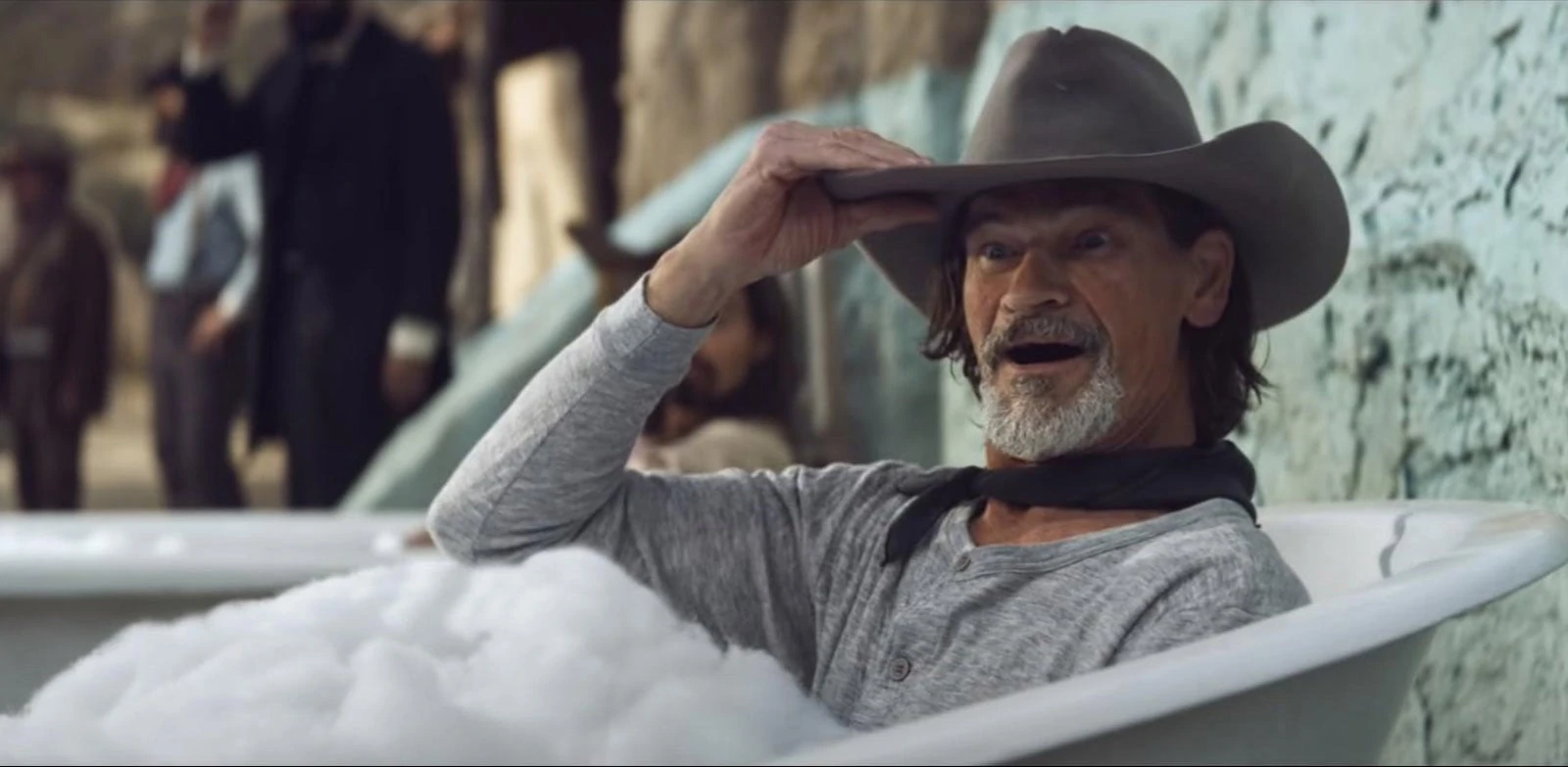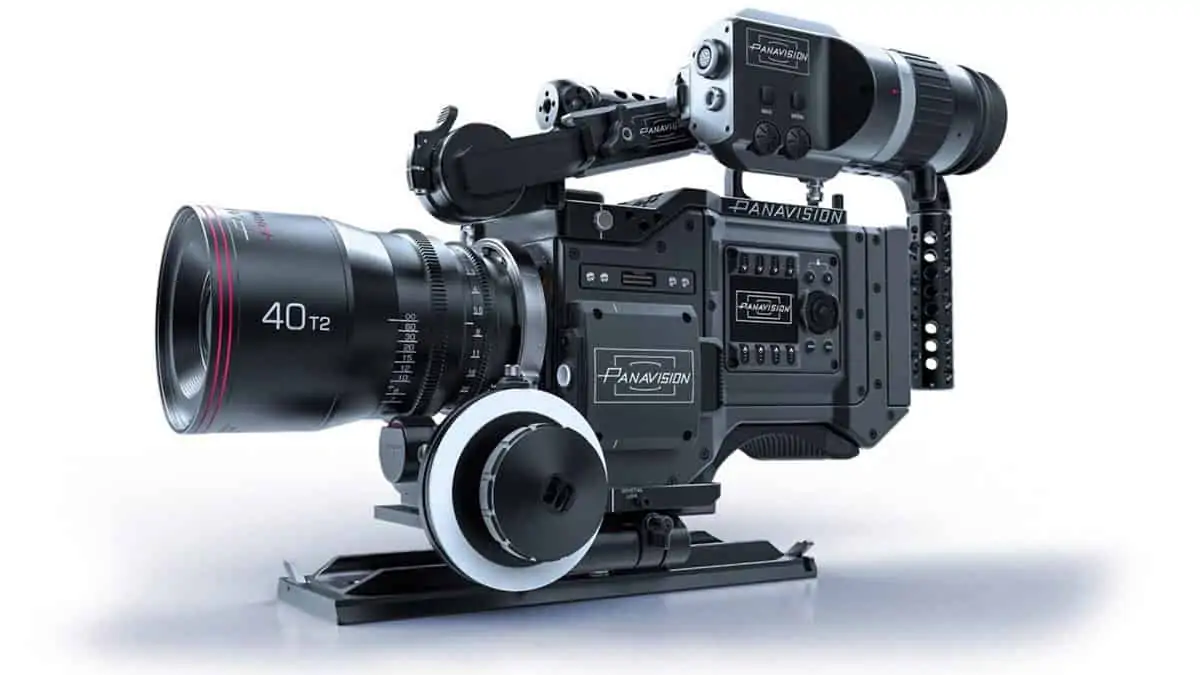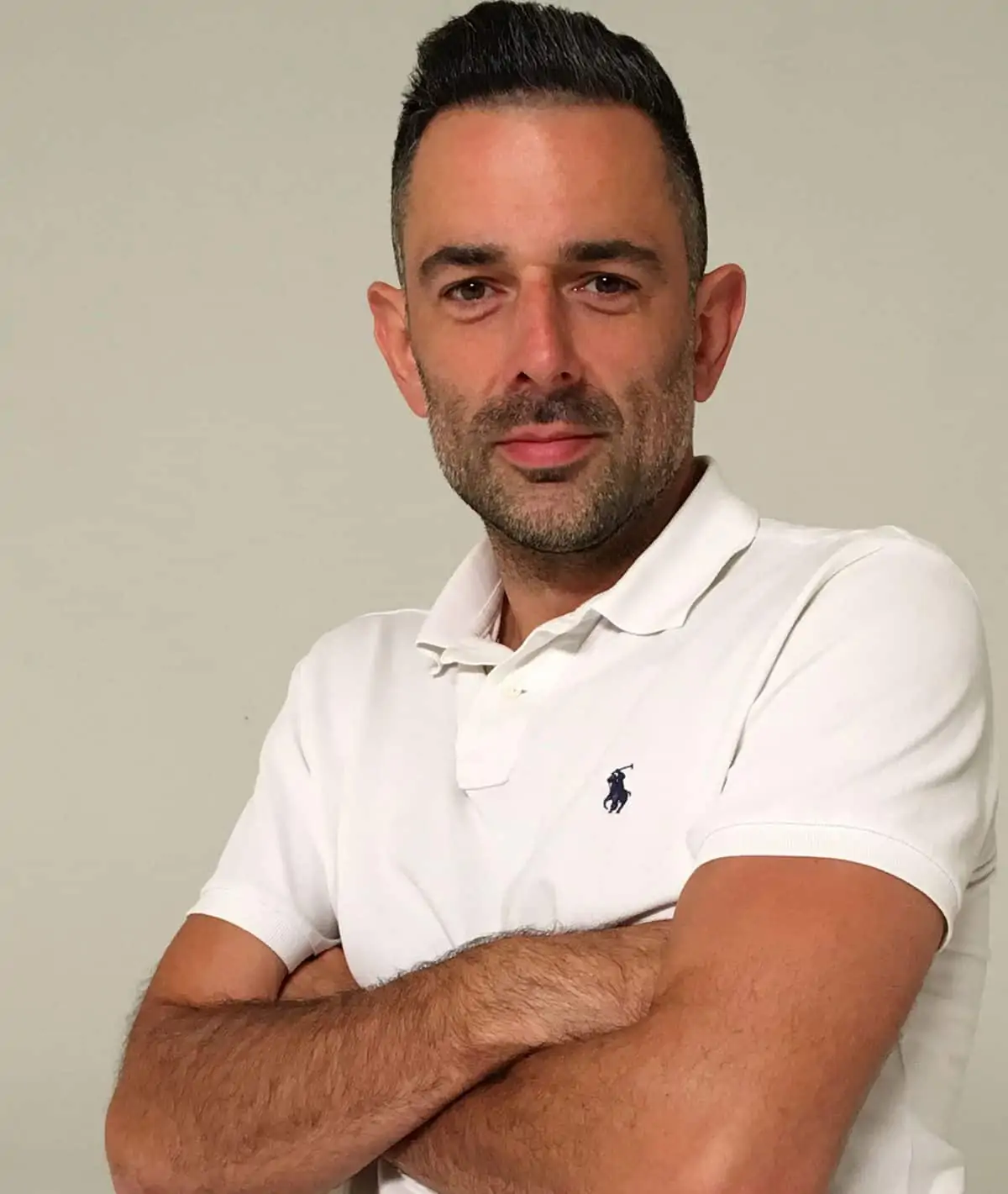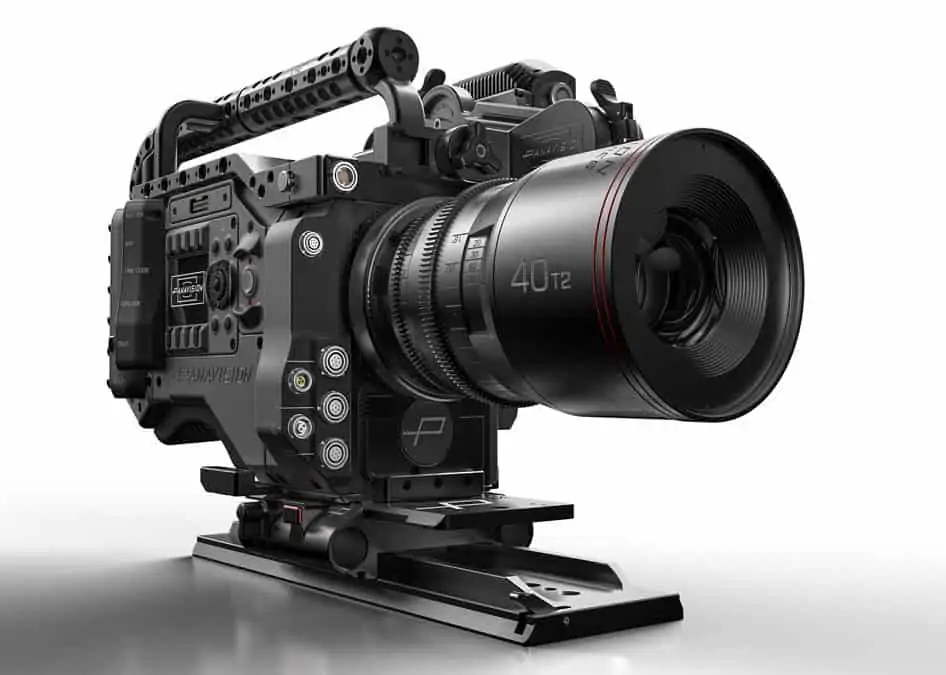Alexis Zabé ASC AMC on shooting commercials in large format with the Millennium DXL2
Mar 15, 2021

Cinematographer Alexis Zabé ASC AMC‘s interest in image making began to develop at an early age, while he was growing up in Mexico City. “I remember going into the darkroom with my dad,” he says. “It was really entertaining for me, the darkness, the smells, seeing the photos appear and the rhythm of that very concentrated work.”
He pursued that interest to Mexico’s Centro Universitario de Estudios Cinematográficos and then into a career as a cinematographer, landing his first big break on director Fernando Eimbcke’s 2004 black-and-white feature Duck Season. Zabé’s feature credits also include Eimbcke’s Lake Tahoe, Carlos Reygadas’ Silent Light and Post Tenebras Lux, and Sean Baker’s The Florida Project. Along the way, he’s also photographed a wide range of short-form projects.

With a two-year-old son at home, Zabé has recently been focusing his career on commercials. “I like the rhythm of commercials,” he says. “I’ve consciously not done a feature for the last couple years because it would pull me away from seeing my family for three months. Especially when my son is so young, I wake up to go to work and maybe he’s still asleep, and then I get home and he’s already asleep. But he’s starting to understand why I’m gone, so I’m more flexible now about doing a feature than I have been the last couple of years.”
The cinematographer began 2021 with a string of three commercials shot back-to-back: a Klarna spot (“The Four Quarter-Sized Cowboys”) directed by Andreas Nilsson, a Mark Romanek-directed McDonald’s commercial (“Thank You for Driving Thru”), and an Evian shoot with director Vincent Haycock. Both the McDonald’s and Klarna commercials premiered during the Super Bowl broadcast on Feb. 7, while the Evian spot was made for the European market.
Zabé took some time to discuss these projects and more with Panavision…
Panavision: Early in your career, you took a year off to study yoga in India. What led to that decision?
Zabé: When I graduated from film school, there was a big economic crisis, and a lot of the DPs in Mexico left the country, which left a huge opportunity for us. We just got out of school, and there was a lot to do. So I worked and worked and worked. I did a lot of special effects, and we would sometimes work 24, 36 hours straight — just crazy hours, and eventually I burned out. I’d recently started practicing yoga with some friends, and I was really interested in it and where it comes from and what it does. Certain things lined up in my life that made it perfect for me to leave for a year, and I decided to go and study yoga and travel and figure things out.
When you study in India, it goes beyond just the asanas, or the physical practice. It’s basically a philosophy for life. Everything you do is influenced by that knowledge. You end up practicing yoga every day, with every decision. It changed my perspective on life, and that changes everything. My approach to the work did a complete 180 after that practice.
In terms of the projects you choose to take?
Zabé: Yeah, eventually. Especially in feature work, if you don’t fully believe in it and have the correct circumstances in your life, it’s hard to do, because it’s such a huge investment in time and energy and compromise. I try to choose features that are trying to say something that I want to tell the world. You can’t always do that. Sometimes you’ve got to do things for different reasons.
It’s changed the way that I work with lighting as well. I became way more flexible about it. It’s less about control and much more about flowing. I remember when I got out of school, it was always a struggle to get things exactly as I thought I wanted them. It was totally about controlling the light, and it was a very strenuous effort. But now I start with whatever’s there already, and I then work on top of that. I learned to value reality. It’s a more observational and flexible approach to the work.
And for handheld work it’s been really useful. It’s kept me lean so I can squeeze into nooks and crannies and get into weird positions to find angles. It definitely influences you that way.
What brought you to Panavision for these three recent commercials?
Zabé: I’ve been working with Panavision for quite a few years. I really like the approach that Panavision has to filmmaking, and I have a great partnership with Rik [DeLisle, marketing executive at Panavision Hollywood]. He’s been really supportive. And there are always new things, new lenses, or new old lenses, to try. When I talk to Guy [McVicker, technical marketing manager] and he does special adjustments to the optics, I learn a lot about a part of my craft that’s really a mystery for most of us who are out in the field. Since everything’s designed in-house, people have a real knowledge of the lenses, what they can do and how you can move them around. It’s a great experience.
What’s also cool about Panavision is that not every lens series matches every other series. They all have their own particular personalities and identities. There’s always something you can take off the shelf, and you never feel like you’re getting an ‘industrial’ look. It always feels personal. It just makes the whole process more fun.

What was the basic premise of each commercial?
Zabé: The first commercial was comedy, with director Andreas Nilsson, who’s really quirky and funny. He juxtaposes elements of reality in such a bizarre way that creates these great little universes. There’s a new online store, Klarna, where you can buy things and pay in four smaller payments. So we had Maya Rudolph as four tiny cowgirls, quarter size, riding miniature ponies. It’s a funny commercial, very simple, but there was a wink to old westerns.
After that we shot a commercial with Mark Romanek, whom I’ve always admired as a director. That was a spot for McDonald’s. It’s a Covid-era commercial, so it’s about what you do in your car when you go pick up food and you’re listening to songs and singing along. It’s more of a musical piece.
The third spot we just did was for Evian. We worked with Dua Lipa, and we wanted to recreate the energy and the vibe of that moment before a performance, as she’s rehearsing and doing a sound check. She performed one of her songs a cappella. Her music is very produced and very pop, so listening to one of her songs with just her voice was a treat.

You shot all three spots in large format with the Millennium DXL2 camera. How did you come to that decision?
Zabé: I’ve been using the DXL2 for a few years now. You get such a nice, filmic look with it. The colour technology’s really great. I’ve been using its Film LUT to preview what we’re shooting, and then I do a lot of on-set grading, so we’ll just grade off the raw. I love the results, so whenever I can, I’ll shoot large format with a DXL.
Digital cameras have evolved a lot, and now as DPs we’re getting to actually use large-format cameras, which we didn’t really have easy access to when it was just 65mm film. But we’re all photographers, so we know what it’s like to shoot a portrait with a 6×6 film camera. Shooting large format gives us so many more tools at our disposal and helps us have a greater vocabulary.

You used Auto Panatar lenses for the Klarna commercial, Sphero 65 for McDonald’s, and H Series for Evian. What characteristics do you see in each of those series?
Zabé: I’ve really been enjoying using the H Series lenses. I’ve used them before, and they’re gorgeous, with beautiful flares. They give you a bit of an anamorphic look while using sphericals. They have that really painterly, impressionistic bokeh. Since Dua Lipa’s performance in the Evian commercial is so contained, we wanted to be able to cover it with nice close-ups in large format.
It was a new experiment for me to use the Auto Panatars and the Sphero 65s. For the Klarna commercial, we used the Auto Panatars as a bit of a wink because we were doing a western and they had been used on The Hateful Eight. On a technical aspect, it was really nice to use the camera’s full sensor with anamorphic. The lenses have a 1.3 squeeze, so you’re using the DXL2’s whole sensor [to achieve a final 2.39:1 aspect ratio].
The McDonald’s commercial was all about people performing songs in their cars, so there was a lot of close-up work in tight interiors, and we couldn’t have the camera too far away. I wanted to do wide-angle portraiture at a close-range, and Panavision has this set of Sphero 65s that were tweaked for a particular movie that had been looking for the same characteristics, which made them perfect for this spot. We could be in car interiors and not have to struggle with diopters, and even though we were using very wide-angle lenses, because it’s large format, they’re nicer portrait lenses. You still get the whole context around the actors, but you also get to play with the depth of field.

Were you handheld or locked off inside the cars for the McDonald’s commercial?
Zabé: We did as much handheld as we could, but because of Covid, there were certain protocols. Since the talent was singing and they had to have the windows closed to record their performance, we couldn’t get into the cars. So any shot where they were driving and the camera was inside with them had to be a lock-off. Covid has definitely created new limits and made us adjust the way we work.

How does the DXL2’s native 1600 ISO impact your lighting?
Zabé: The 1600 ISO’s great. It really helps to be able to use less light and get into spaces and capture things you’d ordinarily not be able to. And I’m comfortable pushing it at least to 3200 and sometimes a little bit more. It’s such a flexible camera and very easy to use.
What’s great about digital cinematography in general is that it opens up the world of darkness for you. There’s kind of a yin-yang where film really needs light and looks best when it’s well lit, but I find digital looks best when it’s underexposed. It really works well in low-light situations and preserves a lot of detail.
Were you always using the full 8K sensor, or did you ever crop down in-camera?
Zabé: I’ve always used the full 8K sensor, but I like that you can crop down. It’s a good tool to have; I just haven’t had a good reason to use it yet. It’s also nice to shoot 8K and have the possibility later on down the pipeline to recompose. And for the Klarna spot with the four Mayas, it was good to get the 8K for post production.

How much time did you have between these three commercials?
Zabé: Not much. It was really back-to-back. Klarna was a two-day shoot, McDonald’s was a three-day shoot, and Evian was a one-day shoot with a one-day prelight. The days off that I had on one, I was scouting or having meetings for the next one. It was a fun way to start the year. And by the time I finished, I was ready for a little time off.

How have you spent that downtime? How do you recharge your batteries?
Zabé: My downtime is a lot of family time now. I come back after working for three straight weeks, and there’s a huge need just to be around and pay attention. It’s been a lot of taking my son to the park to learn how to use his scooter. I love to skate, so we’ll just go out together in the afternoons. He’s 2 years old, so he’s basically spent half of his life in quarantine at this point.
Hopefully brighter days are around the corner.
Zabé: For sure brighter days are coming. When we get to the other side, I feel we’ll emerge better as a society. I think we’re going to look back on this and see how it opened up an opportunity for a better world, with more hope and positive changes. I already feel it. Changes are happening in a good direction right now. Let’s just hope the ball keeps rolling, not just here but everywhere.



















